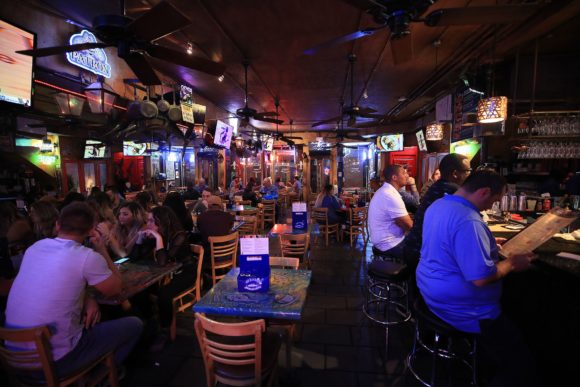If the past two years have taught us anything, it’s that anything can happen.
There are dozens of unforeseen possibilities that could leave your business financially liable or could otherwise discourage guests from returning. And in the restaurant industry, that lesson is especially clear. For restaurant owners and operators, having a full understanding of all coverage options is critical.
General Liability Coverage is the First Step
In environments like restaurants and bars, risk is elevated. There’s a higher chance that employees or customers might slip and fall, become sick from foodborne illness or that property damage might occur, and when those things happen, the restaurant is usually found liable. General liability coverage is a great jumping-off point for restaurants to have in their arsenal for covering a guest’s injury or illness brought on by the restaurant’s food or property.
Most restaurant owners and operators think general liability coverage is a stopping point, since their policy has them covered for things like bodily injury, property damage and personal injury. But these are just a handful of claims that could be wielded against a restaurant, and often a wider net needs to be cast to fully insulate a restaurant from these threats and the lasting impact they can have on business operations.
The Benefits of Broader Coverage: Trade Name Restoration
Think of the threats that could negatively impact your restaurant if they become a reality. A loyal customer could contract a nasty foodborne illness and swear to never eat at your restaurant again. A disgruntled employee could become enraged and damage your property, or even spread false rumors about your establishment that negatively impact your reputation. A global pandemic could halt in-restaurant dining and put the brakes on your restaurant’s cashflow.
All of these scenarios can damage a restaurant’s business operations, and the damage is often too great for a general liability policy to be very effective. The best way to be fully prepared with the right coverage for a situation like this is to be fully educated on what coverage options are available. Business interruption policies generally exclude losses resulting from anything other than direct, physical damage, although courts have recently offered different rulings on that.
 Another option is to acquire a trade name restoration insurance program which goes beyond the boundaries of a traditional general liability policy to address the unique costs associated with things like foodborne illness outbreaks, property damage and more.
Another option is to acquire a trade name restoration insurance program which goes beyond the boundaries of a traditional general liability policy to address the unique costs associated with things like foodborne illness outbreaks, property damage and more.
In one instance, a restaurant client of ours with a multi-state presence and hundreds of locations suffered a big-time foodborne illness loss that might have significantly impacted the business, had it not been for trade name restoration. News of their customer’s illness reached the news station and made the story viral, and that rapid escalation of damaging news can sink a restaurant’s brand.
We had advised a trade name restoration policy and educated our client on how to weigh the benefits against the risks. Our client was able to save millions of dollars in lost revenue and unexpected expenses like vaccinations.
Hope for the Best, Prepare for the Worst: Protection Against Workplace Violence
Unfortunately, foodborne illness and reputational threats are not the worst that a restaurant could face. Millions of workers across industries become victims of workplace violence every year, and in 2020 alone, assaults resulted in more than 20,000 injuries and almost 400 fatalities. Certain factors specific to the nature of the restaurant industry make restaurants a high-risk environment for workplace violence, including long hours and ease of access.
The fact that every place of business needs to address workplace violence becomes more apparent each year – and this year is no exception. One of our hospitality clients recently underwent a traumatic active shooter situation that might have left them at a loss if they hadn’t been educated on active shooter and violent act coverage.
While developing employee training programs and creating action plans is a great first step, restaurant owners need to consider how they can get more out of their insurance coverage to protect their business from the detrimental consequences of workplace violence.
Active shooter and violent act coverage surpasses the boundaries of general liability insurance to address things like bodily injury, response expenses and revenue loss. Beyond that, it connects counselors with employees to provide extra support and give them a sense of community to recover from the trauma of experiencing an active shooter situation. Employees, guests and patrons want to feel safe in their favorite restaurants—safety is an unspoken expectation that they have, after all.
The Value of Equipment Breakdown Coverage
Any time the power goes out or a refrigeration unit stops working, a restaurant’s revenues and expenses are threatened. Having equipment breakdown coverage when these unfortunate situations arise is well worth the time and investment for restaurants, because the things they need to operate successfully can be threatened at any moment by events outside of their control. For example, earlier this year a restaurant client suffered a cooler breakdown.
Without an equipment breakdown policy in place, our client would have had to shore up the funds to repair the cooler, rent a mobile walk-in box and replace spoiled food with fresh ingredients. Because we advised the client to secure equipment breakdown coverage, the client’s only out-of-pocket expense was his property deductible, and his restaurant operations never skipped a beat.
Matt Mallory is CEO of the Mallory Agency, based in LaGrange, Georgia.
Topics Liability
Was this article valuable?
Here are more articles you may enjoy.



 Project 2025 Plan to End NFIP Welcomed by Some, Rejected by Others in Insurance
Project 2025 Plan to End NFIP Welcomed by Some, Rejected by Others in Insurance  Trigger Warning: Cyber Policy Wordings to Impact Coverage for Tech Outage
Trigger Warning: Cyber Policy Wordings to Impact Coverage for Tech Outage  With American Mobile Cancellations, Florida Mobile Home Market Has ‘Fallen Apart’
With American Mobile Cancellations, Florida Mobile Home Market Has ‘Fallen Apart’  Man Admits to Tracking Drivers, Programming Keys, Stealing and Reselling Vehicles
Man Admits to Tracking Drivers, Programming Keys, Stealing and Reselling Vehicles 

